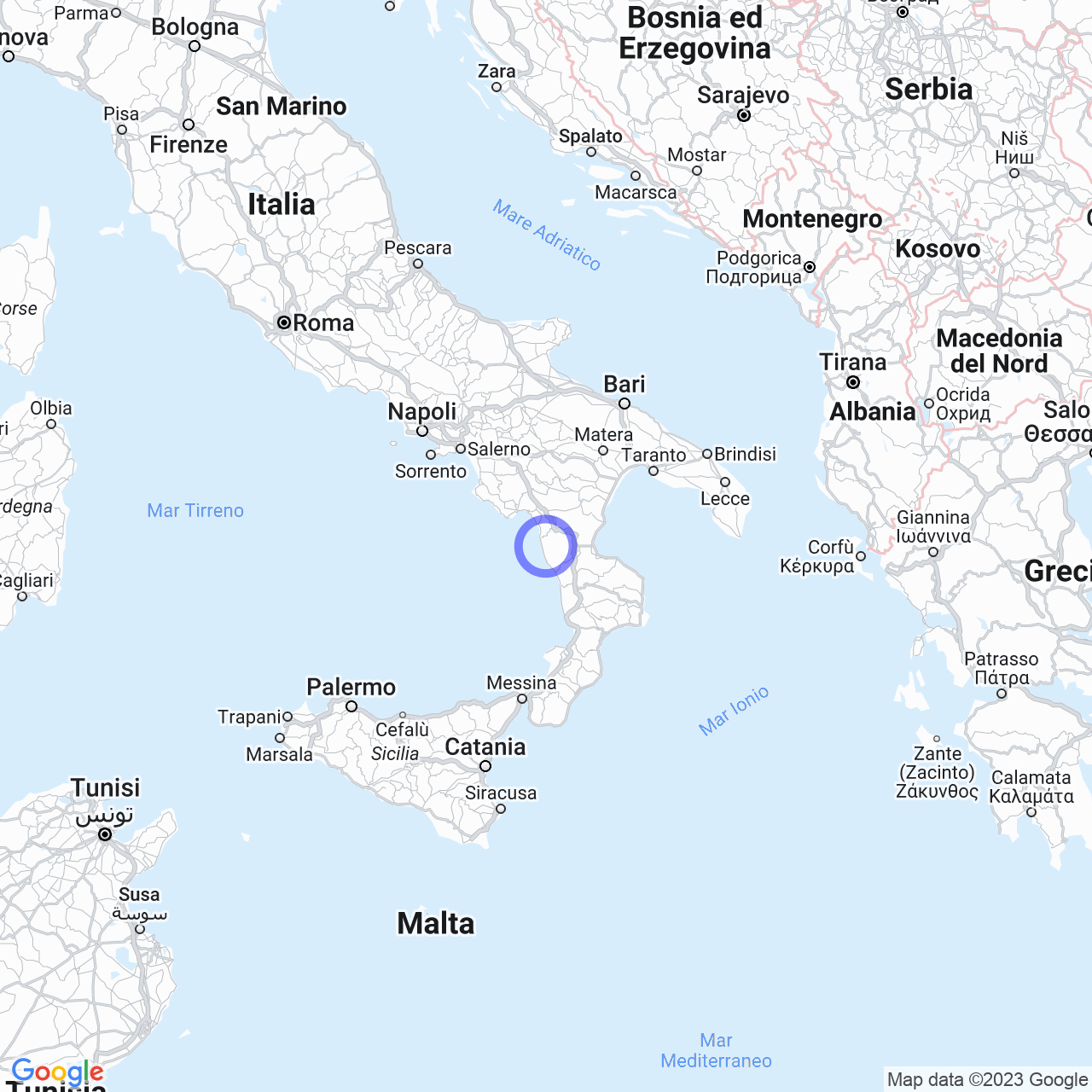Grisolia
Discover Grisolia, a gem in Calabria
If you want to discover a place of authentic beauty, you must absolutely visit Grisolia, a Calabrian municipality with only 2192 inhabitants located in the province of Cosenza and part of the Pollino National Park.
Physical geography
The geographic location of Grisolia is curious, as it is perched on a hill and is separated from the nearby town of Maierà by a ravine (the two villages are only 900 meters away as the crow flies). It is a well-known seaside resort, located in the center of the Cedars Riviera, at a happy altitude of 465 meters. It is also part of the Pollino National Park, which extends over 33,300 hectares, where the western slope of Mount La Mula, the highest altitude reached by an Italian municipality with a sea outlet, is located.
This is an area of high biodiversity, where centuries-old chestnuts are the symbols (known as ''castagno del ramarro''). The presence of the autochthonous roe deer and the Canis lupus italicus are the characteristic faunal symbols of the mountainous territory. On the slopes of La Mula, the Pinus heldreichii, symbol of the Pollino Massif, enhances its biodiversity. If you want to admire the beauty of nature, you cannot miss a visit to Grisolia!

History
Grisolia has medieval origins and its name, according to some scholars, may come from the Greek language ''Chrousolea'' or the Latin language ''Chrisena'', which in both cases means gold. It is not clear whether it refers to the particular fertility of its lands or whether there were actually gold mines.
Monuments and places of interest
The historic center
The historic center of Grisolia is a charming place, with its countless alleys, stairs, arches, and supports. The alleys are different from each other in length and width, and from their ascent, you can admire the beautiful panorama from the hill overlooking the Cedars Riviera. Another feature of the architecture of the historic center is the supports, in dialect ''lo spuortu'', covered stretches that unite the houses to each other. Grisolia stone is particularly widespread in constructions, and clay tiles, in dialect ''ceramili'', are widely used for roof covering. The chamfering of the tiles with the attachment to the wall is of singular effect, while the walls are left raw and not plastered.
The palaces stand out for their size, style, and age. Among them are the Ducal Palace, which dates back to the fifteenth century and is now owned by the municipality; the Palazzo ''de Patto'' in the castle area, and the Tosto Palace above the ''spuorto di Via Sotto le Mura''. In the streets, the alleys converge, ''vanelle'', once almost all predisposed to stone steps and now paved in porphyry with decorative elements and river pebbles.
The Acchio fraction and the Tyrrhenian coast
The municipal territory of Grisolia is very heterogeneous, extending from the coast on the Tyrrhenian Sea, where the Acchio fraction is located, to the western slope of Mount La Mula, located at an altitude of 1905 meters above sea level. The Acchio fraction is a very popular tourist destination in summer, thanks to its wonderful beaches and its proximity to the sea. History enthusiasts, on the other hand, cannot miss the opportunity to visit the remains of the Norman Tower, an ancient twelfth-century watchtower.
Conclusion
Grisolia is a small town that, with its enchanting geographical location, charming historic center, and historical relevance of its Norman tower, has become a highly appreciated tourist destination by both Italian and foreign visitors. If you want to spend a day discovering the authentic beauty of Calabria, you must absolutely visit Grisolia!
